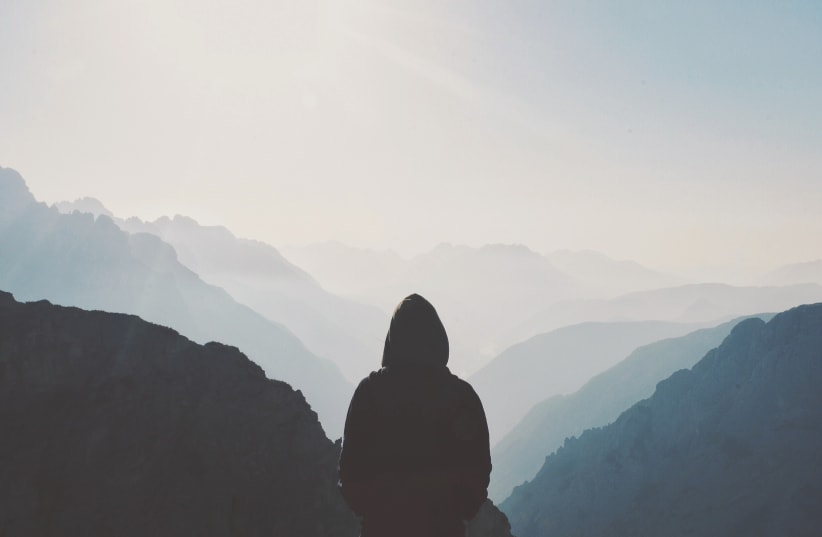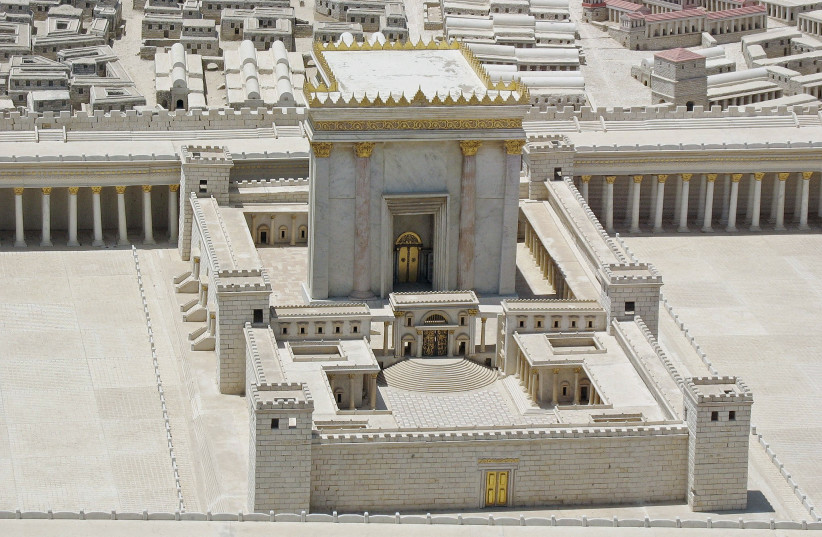As we take a look at Parshat Eikev, Moses stands atop a mountain cliff, surveying the land he will never enter. He lovingly gazes at the terrain and guarantees its delivery to the chosen people.
While scanning the sweeping landscape, Moses is particularly enchanted by the “good mountain” upon which the Temple is situated. Yearning to climb that historic mountain, he refers to it with a strange term. He dubs it “levanon.”
What does the moniker levanon connote about the Temple?
Firstly, the term levanon evokes the Hebrew word lavan, which refers to the color white. The Temple enabled a chatat-korban, or a sin-sacrifice, which whitened human virtue, which had been stained red by sin. Though the whitening effect refers specifically to sin-sacrifices, it alludes, more generally, to the full sweep of sacrifices and ceremonies of the Temple.
In addition to ritual and sacrifice, the Temple was also a hub of prayer. All human prayer – both Jewish and gentile – streamed up this mountain, on its way through the gates of heaven. Finally, the Temple was a core of Torah knowledge, as the tablets were housed in the ark, and the great Sanhedrin was hosted in an adjacent lobby. This mountain was the consummate “building of God,” housing religion, ritual and prayer. It was majestic white.
Additionally, the term levanon evokes the Hebrew term lev, or heart, as this mountain fastened and fascinated every Jewish heart. Three times a year, when the Temple stood, an entire population of men, women and children would pilgrimage en masse to this national complex. Even during the rest of the year, when the mountain was quieter, it was still the one location that captivated and unified the entire nation.
After the Temple was demolished, the mountain played an even greater role in capturing Jewish hearts. For thousands of years, it magnetized scattered Jewish hearts across the globe. Lost in distant wastelands, we all dreamed about this mountain, inserted it into prayers, longed for it at weddings, and collectively prayed for our national return to Zion.
This mountain is both white and red. It whitens human virtue but also pulses with the heartbeat of every Jew. White and red. One mountain with two colors.
Levanon and the Temple of Jerusalem: Paradoxical meanings
THESE TWO colors clash, and the two meanings of levanon are also paradoxical. For the Temple to serve as a site of ritual, it must be carefully protected and guarded. Halachically impure people must be turned away, and those who do enter must carefully respect the guidelines and protocols of this heavenly mountain. For this mountain to remain white, it must be exclusive. Not all behavior is accepted and not every person can always be invited.
However, for the Temple to serve as the epicenter of every Jewish heart and the unifier of the Jewish imagination, every type of Jew must be invited, and all levels of observance must be welcomed. How can a broad population be included while still maintaining the religious integrity of the mountain?
In the past, Halacha carved out carefully calibrated rules that restricted entry but still enabled inclusiveness. The outer precincts of the Temple were accessible to all, save those with extremely rare and severe halachic impurity. Most people were allowed to visit some part of the mountain, even if they couldn’t enter the inner chambers.
Even without actual presence, inclusion was achieved by allocating broad participation in Temple ceremonies. For example, every week a different delegation of Jews would assemble in local towns, performing the Temple-related ritual of ma’amadot. The delegates fasted and prayed so that the sacrifices of the Temple would be received in heaven. Though they stood afar from the Temple, their ceremony was absolutely vital for Temple success.
Interestingly, even though year-round entrance was carefully restricted, there were significant concessions implemented during the festival pilgrimage. The Gemara in Haggigah describes leniencies that accounted for the increased foot traffic atop the mountain. The barriers to full-scale entry remained in place, but various leniencies were accepted along the margins, allowing for a more freely accessible experience.
In the past, it was relatively easy to calibrate between the two colors. Actual visitation was strictly regulated year-round, with slight concessions during festivals. Additionally, inclusion was realized even without actual an presence on this mountain.
In the modern State of Israel, this challenge is not as easily navigated. The mountain and the Western Wall are perhaps the last symbols of national unity in a badly fractured Israeli society. In 1967, the liberation of the Western Wall unleashed a type of national unity that seems unattainable in today’s splintered reality.
What price would we be willing to pay for the Western Wall-centered national solidarity of 1967, or even for a glimmer of that harmony? It is hard to imagine a location that more deeply and broadly unites Jews, both across the religious spectrum and across the globe.
Yet the Western Wall is also a site of prayer, and the laws of the synagogue must be strictly applied. Beyond its formal status as a site of prayer, it is also the last-standing wall of our lost Temple, behind which God waits patiently for our redemption. Even if prayer were not conducted at the Western Wall, we would still demand the decorum and gravitas reflective of the divine presence.
How can the Western Wall serve both functions of levanon? How can it at once serve as a holy site of prayer and ritual, while also beckoning a broad range of Jews – many of whom do not subscribe to strict Orthodox standards of prayer? How can this mountain be both white and red?
IT IS A good question and one which doesn’t yield an easy or immediate answer. Equally important to finding a solution is acknowledging the paradox and exhibiting sensitivity to each color and to each function of this mountain. We cannot forfeit either function of this mountain. We must protect its holiness just as we include every Jewish heart in its experience.
Not every quandary in modern Israel can be simply or easily solved. Returning our people back to their ancient homeland is a fraught process that will probably unfold over multiple generations. It will take us some time to iron out the wrinkles of Jewish history. We imagine that redemption will be an immediate shift, and we devotedly pray for that form of “electric” divine overhaul. More likely, though, the process will occur in stages, and miracle solutions to unwieldy dilemmas will be rare.
For the first time in thousands of years, we attend not only to our personal religious code but also to the religious experiences of a broad population – many of whom are not strictly observant of our standards. We are no longer living in Jewish “communities” but in a Jewish state. Policies which exclude those whose standards fall short of our own may be suitable in a community setting. However, there is only one land of Israel and only one Western Wall, and we want every Jew to feel a part of each.
In the past, Jewish communities often faced religious questions. In Israel, we face quotients, not questions. How can we balance two competing values? Religious challenges in Israel are more complex and more nuanced than they may be in Jewish communities.
Life in Israel is three-dimensional – many, many colors. ■
The writer is a rabbi at Yeshivat Har Etzion/Gush, a hesder yeshiva. He has smicha and a BA in computer science from Yeshiva University, as well as an MA in English literature from the City University of New York.

